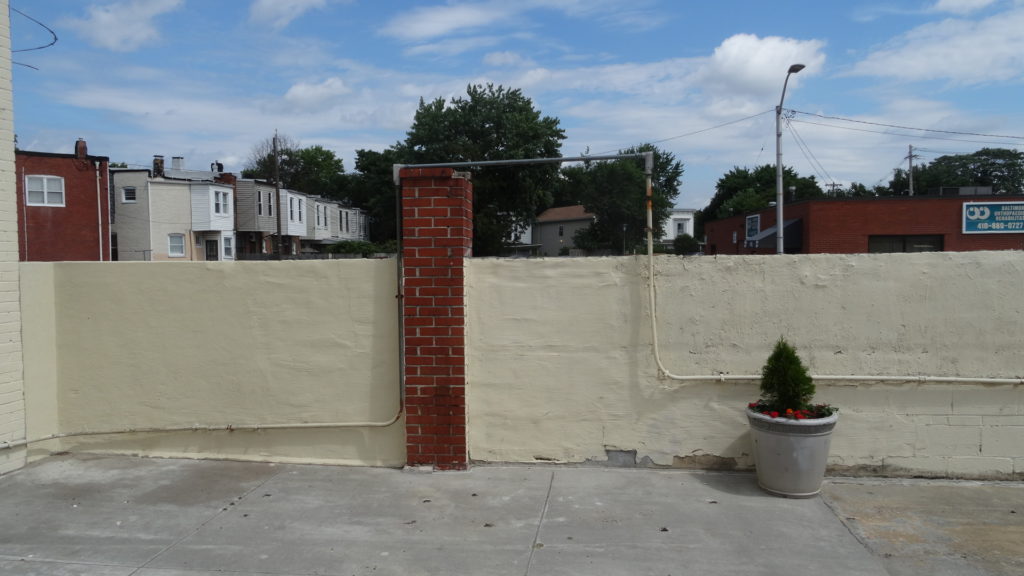The history of Oriole Park in Baltimore is often associated with its demise. On July 4, 1944, an early-morning fire began near the third-base grandstand and ultimately set much of the facility ablaze.
With their home ballpark destroyed, the International League’s Baltimore Orioles were forced to spend weeks on the road before returning to Baltimore and playing at Municipal Stadium. That proved to be the beginning of a turning point in the city’s sports history, as Municipal Stadium was later rebuilt and rechristened as Memorial Stadium.
While the rise of Memorial Stadium marked a new era in the history of Baltimore baseball, the legacy of Oriole Park had seemingly vanished. The ballpark on 29th Street and Greenmount Avenue was damaged beyond repair by the fire, leaving much of it only to memory. Though it is true that Oriole Park suffered a quick demise at the hands of the fire, its legacy has not been completely forgotten, as reminders of it can be seen today.
Oriole Park plays an integral role in the history of Baltimore baseball. Originally built in 1914, the ballpark opened as Terrapin Park, adapting the name of its Federal League ballclub, the Baltimore Terrapins. The Terrapins proved to be short lived, lasting just two seasons before folding when the Federal League ceased operations.
In 1914, the Baltimore Orioles of the International League struggled to compete with the new team and ballpark nearby. In the aftermath of a season marked by diminished fan support, owner Jack Dunn moved the Orioles to Richmond—where they became the Richmond Climbers—for the 1915 season. However, with the Terrapins out of the picture, Dunn and the International League returned in 1916 after he purchased the Jersey City franchise and established them as the new Baltimore Orioles.
The Orioles took up residency in the former home of the Terrapins, renaming it Oriole Park, making it the fifth Baltimore ballpark to go by that moniker. In the coming years, the Orioles became one of the most successful franchises in the International League—winning seven straight pennants from 1919-1925, and even featuring future Hall of Famer Lefty Grove for a few of those titles.
It was not just the Orioles that established a notable history at Oriole Park, as the ballpark was also used for home games for the Baltimore Elite Giants. While Bugle Field was used for many of their home games, the Elite Giants played home contests at Oriole Park on an occasional basis from 1938-1944, a period that saw future Hall of Famer Roy Campanella suit up for the team.
In the present day, Oriole Park’s legacy lives on in a unique way. Part of the site of the former ballpark is now occupied by Peabody Heights Brewery. Since 2012, Peabody Heights has operated out of a plant that is located in much of what used to be the outfield of Oriole Park, and the brewery has embraced its connection to the ballpark.
Within the tasting room at Peabody Heights is a large display of photos and other mementos that chronicle the history of Oriole Park, including information on the Orioles and the Elite Giants. The exhibit offers a glimpse into the vast legacy of Oriole Park, but it is not the only reminder of the ballpark around the site.
In 2015, surveyors determined the exact layout of the field at Oriole Park. Home plate was determined to be in what is now a grass strip along the 2900 block of Barclay Street, while second base’s location was pinpointed within the brewery.
The site also includes a unique touch that is believed to have survived the fire. Along 30th Street runs a brick wall that has been preserved over the years and is said to be a portion of the original left field fence. The wall is one of the more visible features for customers at Peabody Heights, as it sits along the side of the brewery’s beer garden.
A visit to Peabody Heights can double as an experience for both baseball and beer lovers. The brewery lists tasting room hours on Wednesday, Friday, and Saturday, and offers tours that explain the history of the site.
When Oriole Park burned in 1944, it represented a loss in the history of Baltimore baseball. More than 70 years later, however, reminders of the ballpark’s legacy live on.
This article first appeared in the weekly Ballpark Digest newsletter. Are you a subscriber? It’s free, and you’ll see features like this before they appear on the Web. Go here to subscribe to the Ballpark Digest newsletter.
Previous Ballparks That Live on Entries:



